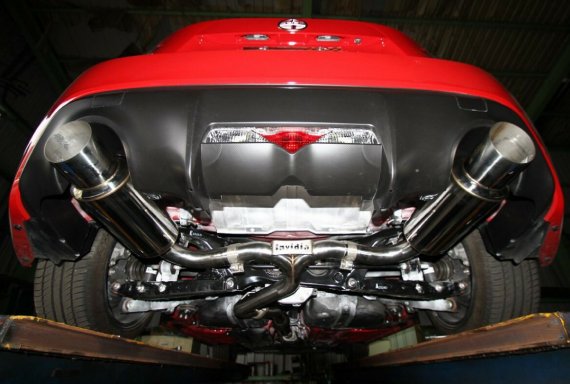G35 Oil Type – Which Oil Is Best?
Choosing the best oil can become a little overwhelming with so many choices. Whether you’ve got a stock or tuned G35, we’ve got the perfect G35 oil type.

Jump To Section
Introduction And G-Series History
The G-series is the more luxurious-oriented sports car under the luxury sub-brand of Nissan – Infiniti.
Claiming the birthday of July 10th, 1990, the first-edition G20 housed the heart of a lion, the SR20DE, also found in the 180SX.
The G20, also known as the Primera, was Nissan’s first attempt at penetrating the luxury market in Europe. It got refined with incremental iterations up to 2002.
History refresher by the wayside, the third generation G-series, the G35, housed the iconic-sounding VQ35.
If that engine name is familiar, because it is the same engine found in the Nissan 350Z, the more sports-focused and oriented car, going toe to toe with the likes of the BMW E46 M3, the Honda S2000, and the Mazda RX8.
The G35 came about as either a 2-door or a sedan. It is referred to as the American Skyline. It is the luxurious design of the 350Z in more than a sense.
It didn’t only share the engine, but also the highly-regarded FM chassis platform.
Infiniti G35 Oil Type – Our Recommendations
To understand our recommendations and on what basis we are building our conclusions, it would be best to do a quick overview of what oil functions, designations, and what they represent.
While oil is known to be the lubricant for the engine, its applications and duties do not end there.
The combustion process is violent, resulting in toxic and acidic results. Generally, acids are pretty rough on the engine materials and promote corrosion.
The engine oil neutralizes those acidic results, keeping the powerplant safe. Like anything, the grit and mess that enters the engine are cleaned off by the oils containing them.
Oil also creates a barrier on the surfaces that halts the oxidation process.
Oil is understood and rated by grades. Not by A, B, or C grades, but by 0, 5, or 10 before the W, and a -20, 30, and 40.
So, for example, a 0w-20. The W refers to winter or cold starts. So what are those numbers?
The one before the W correlates to the oil’s viscosity, or thickness, at cold temperatures.
The second number is at operating temperatures, ranging from 80 to 110 degrees Celsius or 170 to 230 degrees Fahrenheit.
Oil as a lubricant changes its viscosity across the temperature operation range of the engine. Cold starts see thicker and heavier oils, and as the temperature climbs to operating temperature, the oil thins and flows.
If the oil is too thick when starting the engine, the pump has to work harder to get the oil moving, and this takes time, leaving the engine without much-needed protection while the oil is pumped from the sump.
In some cases, even, it won’t move; in older, carbureted engines, they might even fail to start.
On the other hand, having too thin oil at operating temperature can be detrimental. It could fail to provide the coating and protection necessary under load and stress.
The general rule is that going thicker for cold and thinner for operating temperatures is risky and discouraged. On the flip side, going thinner and less dense during colder conditions while thicker under operating temperatures can play it safe and secure.
Track toys and high-stress situations take the oil’s operating viscosity up to 50 and, rarely, 60. This ensures a thick coating under stress and that the oil doesn’t falter under high pressures.
Now, don’t run and get the highest SAE-rated viscosity oil; you will more likely than not just overburden your engine. One has to consider the use case of the car. Is it bone stock or lightly modified with a cold air intake?
Then, by all means, stick to the recommended OEM oil of 5W30 in the colder regions and 10W40 for hotter places with a change interval of 3750 miles or 5000 kilometers.
Maybe you’ve bought that G35 of yours for all its fun and sleek looks. Hell, even a four-door fun gun? Tacked on a supercharger or turbo upgrade? Then all the new stresses and heat require a different blend and a stronger oil. The jump from mineral, or semi-synthetic, to synthetic can be a bit of a hit on the wallet.
Below are three oil types that we have decided will suit you best in three different conditions: daily, high-performance driving and modifications, as well as the folks who reside in the colder regions of the world:
5W-30 Castrol Edge Advanced
Rated 5W-30 by the SAE, thus conforming to the standard recommendation of Infiniti’s manual for the G35.
Edge Advanced is explicitly engineered to target the robbing characteristics of oil, focusing on protection under high load without sacrificing horsepower in return or even mileage and efficiency.
It is designed to withstand the ruthlessly high temperatures of turbochargers and maintain a stable and consistent viscosity and performance.
Don’t forget, with a modified car, sometimes fractions are all required to make it past the emissions standard tests, and proper oil can lend a helping hand.
5W-30 Pennzoil Ultra Platinum
The 5W-30 Ultra Platinum offering by Pennzoil is the perfect balance between a high-performance oil and just that and a good old everyday run-of-the-mill oil.
Fully synthetic oil is destined to make lively engines’ lives much happier and more prolonged. It might look like a sedan, but the G35’s beating heart is a young and exciting engine, so it would appreciate the balance of Pennzoil’s Ultra Platinum oil.
0W-40 Mobil 1 European
It’s the northern part of the world and well below the water’s freezing point. The salt trucks have been at it all night, with your dear G35 slumbering in the bone-piercing breeze. The oil is thick, and the engine is labored.
In the olden days, single-grade oils were switched depending on the season. Though multi-grade oils enable you to keep your oil for both winter and summer.
Mobil 1 European is designed to be light on your car’s engine. Sure, it’s off-spec from Infiniti’s recommendation, but it’s also a lot colder out here.
This oil provides a light and flowing nature at colder temperatures but ensures a good coat and protection at higher operating temperatures to not hassle the engine.
Infiniti G35 Oil Type By Year
The Infiniti G35 came with two engines – the VQ35DE and the VQ35HR. Given the overlap during the 2007 model year, it’s worth double-checking which engine your G35 has.
| Nissan Infiniti G35 2003-2007 | ||||
|---|---|---|---|---|
| Year | Engine | Performance/modified | Daily Drive/stock | Cold Climates |
| 2003 | VQ35DE V6 | 5W-30 Castrol Edge Advanced | 5W-30 Pennzoil Ultra Platinum | 0W-40 Mobil 1 European |
| 2004 | VQ35DE V6 | 5W-30 Castrol Edge Advanced | 5W-30 Pennzoil Ultra Platinum | 0W-40 Mobil 1 European |
| 2005 | VQ35DE V6 | 5W-30 Castrol Edge Advanced | 5W-30 Pennzoil Ultra Platinum | 0W-40 Mobil 1 European |
| 2006 | VQ35DE V6 | 5W-30 Castrol Edge Advanced | 5W-30 Pennzoil Ultra Platinum | 0W-40 Mobil 1 European |
| 2007 (Sedan only) | VQ35DE V6 | 5W-30 Castrol Edge Advanced | 5W-30 Pennzoil Ultra Platinum | 0W-40 Mobil 1 European |
| Nissan Infiniti G35 2007-2008 | ||||
| 2007 | VQ35HR V6 | 5W-30 Castrol Edge Advanced | 5W-30 Pennzoil Ultra Platinum | 0W-40 Mobil 1 European |
| 2008 | VQ35HR V6 | 5W-30 Castrol Edge Advanced | 5W-30 Pennzoil Ultra Platinum | 0W-40 Mobil 1 European |
How To Change Your G35 Oil
While timely oil changes are essential for optimized performance and reliability, your choice of oil might still fall subpar to your expectations.
Whatever oil you choose will pass through the car’s oil filter. If that’s clogged, used up, or damaged from an unfortunate pothole, the oil won’t do its job well as it has to make one hell of an effort going that obstacle course of a filter.
It is an excellent point to state that the part number for the filter, as stated by the manufacturer, is: 15208.
Below is a summarized guide. You will require 5 to 5.2 quarts of oil or between 4.7 to 4.9 Liters.
1. 10 and 14-mm socket wrenches
2. Oil filter wrench/adapter
3. Oil drain pan
4. Funnel
5. Latex gloves (optional)
6. Towels
7. New drain plug washer (optional)
8. Five (5) quarts of the oil your choose
9. New oil filter
It is recommended that you prepare the tools and parts to replace close to your work area beforehand to make your work more efficient and less tedious.
Also, it is worth knowing that the G35 has an underbody tray that protects the car’s underside and provides aerodynamic benefits.
Infiniti G35 Oil Change Process
- Firstly, remove the oil filler cap.
- Under the car, take the abovementioned tray off. It is held in place by 14x 10-mm bolts. This will grant you direct access to the oil pan.
- Set your drain pan under the drain plug. Ideally, a little in front of it, as the oil will rush out in front of it.
- Loosen the 14-mm drain plug. It is advised not to remove it using your wrench so that oil won’t get all over it and risk damaging the equipment.
- Remove the plug by hand. The oil will be pressured and will rush out when there is space to do so. The faster the plug is removed, the less messy the process is.
- The oil will drain within 5-7 minutes. Be patient and let as much oil remove itself as advised.
- After draining the oil, we move on to the oil filter. It needs a wrench or wrench adapter. It can even be loose enough to twist by hand. Note: ensure that the oil filter gasket disengages as well. Installing a new filter onto an old gasket can potentially cause problems.
- Clean the filter area thoroughly before replacing the new filter.
- Clean the drain plug, install the new washer, and re-fit the sump plug. Do not over-tighten.
- Fill the new filter halfway with oil, and wet the edges with oil using your fingers. This oil layer will create the suction and seal necessary to prevent leaks.
- Tighten the filter by hand, and then 3/4s of a turn, using the wrench. Be careful not to over-tighten again.
- Fill up the car with new oil, just enough to be in between the H and L marks on the dipstick. Overfilling will cause damage. Better be low and add than overfilled because that will be a wasteful process to recover from.
- Close the cap, start the car, and let it sit for 2 minutes. In the meantime, check for leaks. Once ensured, re-install the undertray.
Now that the car has been running recheck the oil and ensure it’s within range.
Replacing Infiniti G35 Transmission Fluid
The G35 transmission fluid is 3.1 quarts of oil. Some oils are great at operating temperatures but provide harsher shifts when cold, which can risk damage, especially in manual transmissions.
Replacing the transmission fluid is more effortless, as you must drain and refill.
That said, do not get yourself in a sticky situation. Make sure you loosen and remove the fill bolt on the right of the transmission if you are facing toward the front of the car.
The oil from the transmission will fall directly under the drain plug, so there is no need to account for the flow path. To fill it, you will need a transfer pump, as gravity is not on your side for this one.
Knowing if it is filled is also a more straightforward process; when the fill hole drips, it’s loaded.
We hope this guide has provided you with the necessary tools, knowledge, and confidence to complete your first oil change. Or it might be a quick refresher and maybe an oil check along the way that hopefully enlightened you towards a better choice of oil.



















